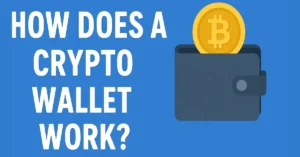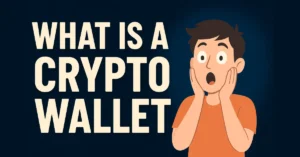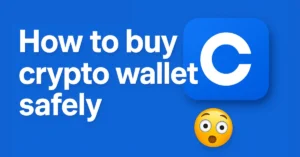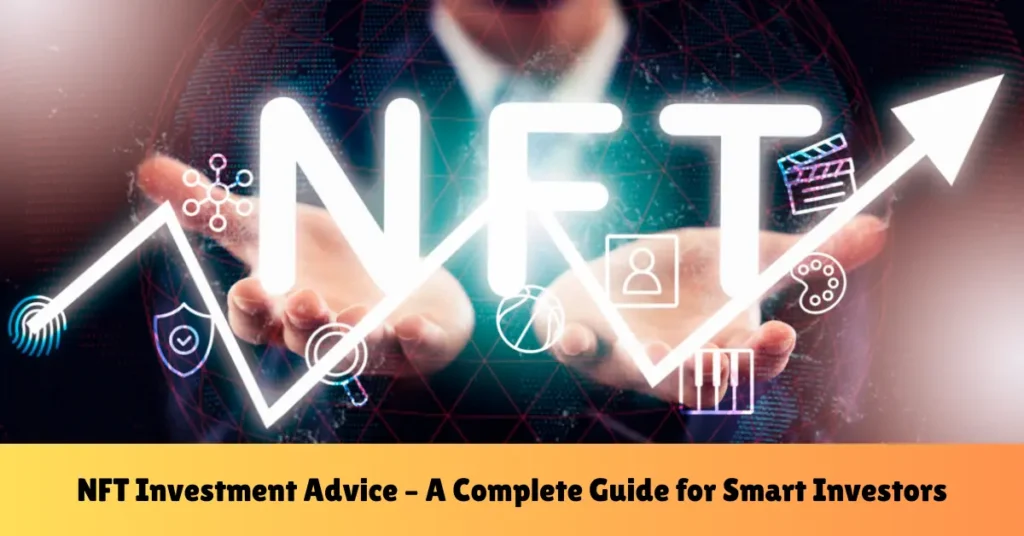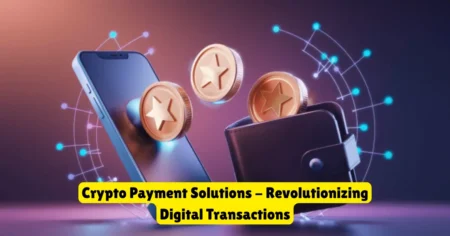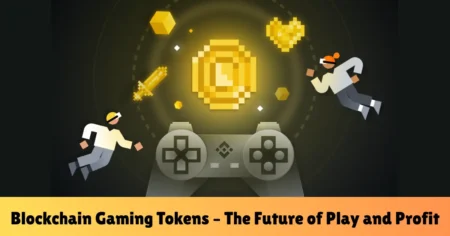NFT investment advice
Introduction to NFT Investments
NFTs—short for non-fungible tokens—have exploded into the financial spotlight over the past few years, shaking up how we think about art, collectibles, gaming assets, and even real estate. At their core, NFTs are unique digital assets stored on a blockchain. Unlike cryptocurrencies such as Bitcoin, which are interchangeable, NFTs are one-of-a-kind, meaning no two are exactly alike. This uniqueness is what gives them potential value.
For U.S. investors, NFTs represent both an exciting opportunity and a cautionary tale. Just like stocks, real estate, or gold, NFTs can be profitable—but they can also be risky. Their value can skyrocket in days and crash just as quickly. The key to NFT success is understanding what you’re investing in, how the market works, and how to protect yourself from common pitfalls.
The rise of NFTs is closely tied to the growth of blockchain technology, decentralized finance (DeFi), and the creator economy. More artists, musicians, and developers are using NFTs to monetize their work directly, cutting out middlemen. Investors who understand these shifts can position themselves for strong returns—but only if they approach the market strategically.
What are NFTs and Why Are They Valuable?
NFTs are valuable for several reasons: scarcity, ownership verification, and cultural relevance. Think of them like a rare baseball card or a limited-edition sneaker—but digital. The blockchain records every detail of ownership and transaction history, ensuring the authenticity of transactions.
Scarcity plays a big role in pricing. If only ten copies of a digital artwork exist, demand can drive the price up. Additionally, some NFTs have utility—they may unlock access to exclusive events, offer in-game benefits, or serve as membership passes to elite communities.
But it’s not just about financial value. NFTs have a cultural impact, too. Some collectors buy them to support artists they love. Others see them as a way to be part of history, owning the first edition of a groundbreaking digital asset.
How NFTs Fit into the Digital Economy
NFTs are becoming integral to the evolving digital economy, especially as more of our lives move online. They merge the concept of ownership with digital interaction. In gaming, NFTs can represent weapons, skins, or virtual land. In music, they can give fans special privileges like backstage passes or exclusive albums.
For investors, this means NFTs aren’t just collectibles—they’re part of a bigger shift toward Web3, where decentralized platforms replace traditional gatekeepers. Owning NFTs could eventually mean having a stake in digital worlds, metaverse projects, or decentralized organizations (DAOs).
The value of NFTs in the digital economy comes from their ability to create verifiable ownership in a world where everything is copyable. They introduce scarcity into the limitless realm of the internet, which is why they’ve attracted so much investor attention.
Understanding How NFT Investments Work
Investing in NFTs isn’t just about buying something flashy and hoping it appreciates—it’s about understanding the underlying mechanics. NFTs are built on blockchain technology, usually on Ethereum, although other chains like Solana, Polygon, and Flow are gaining traction.
When you buy an NFT, you’re not buying a physical object—you’re purchasing a unique token linked to a digital asset. This token is stored in your crypto wallet and can be transferred or sold through marketplaces.
The Blockchain Technology Behind NFTs
Blockchain is the backbone of NFTs. It’s a decentralized, transparent ledger that records every transaction. This means you can verify an NFT’s authenticity, history, and ownership without relying on a central authority.
Ethereum’s ERC-721 standard is the most common for NFTs. It ensures that each token is unique and indivisible. Some NFTs use ERC-1155, which allows semi-fungible tokens—useful for gaming and multiple editions of the same asset.
For investors, blockchain transparency reduces the risk of counterfeits but doesn’t eliminate it. Bad actors can still sell unauthorized copies of digital art, so research is crucial.
How Ownership and Scarcity Create Value
Ownership in the NFT space is about proof, not possession. You might not have the physical artwork hanging in your living room, but you have blockchain-certified proof that you own the original digital version. This verification is what collectors are paying for.
Scarcity is engineered by creators—limiting editions, creating one-of-a-kind pieces, or tying NFTs to exclusive benefits. This scarcity, combined with hype and demand, can create explosive price movements. But remember: scarcity alone doesn’t guarantee long-term value—demand must sustain it.
Reasons to Invest in NFTs
Financial Potential and Growth Opportunities
Some early NFT investors have seen enormous returns. The 2021 boom turned tiny investments into six-figure payouts. While the hype has cooled, the market still presents opportunities for smart investors who buy valuable assets at the right time.
NFTs can diversify an investment portfolio, offering exposure to the digital economy. As the metaverse and Web3 grow, certain NFTs could appreciate, especially those tied to high-utility projects or influential creators.
Cultural and Creative Significance
NFTs are more than financial instruments—they’re cultural artifacts of the internet age. They empower artists and creators to reach global audiences without relying on galleries or record labels. By investing in NFTs, you’re supporting innovation and creativity.
Collectors often see NFT ownership as a status symbol, similar to owning a rare watch or luxury car. This cultural prestige can contribute to demand, driving value over time.
Key Risks in NFT Investing
Every investment comes with risks, but NFTs have some unique challenges.
Market Volatility and Price Swings
NFT prices can be extremely volatile. A project that’s hot today might be forgotten next month. The market is heavily influenced by hype cycles, influencer endorsements, and social media trends.
Scams, Frauds, and Security Threats
The NFT space is rife with scams—from fake collections to phishing attacks. Investors must protect themselves by verifying authenticity, using secure wallets, and avoiding suspicious links.
How to Choose the Right NFTs
Picking the right NFT isn’t luck—it’s research.
Evaluating the Creator’s Reputation
A strong track record, active community engagement, and previous successful projects are good signs that an NFT creator is trustworthy.
Assessing Rarity, Utility, and Demand
Look for NFTs that offer more than just artwork—utility like exclusive access, in-game perks, or staking benefits can boost long-term value.
Best NFT Investment Strategies
NFT investment isn’t just about buying something cool and hoping for the best—it’s about adopting a strategy that matches your goals, risk tolerance, and market knowledge. Investors who treat NFTs like they would any other asset class tend to make smarter decisions and avoid costly mistakes.
Long-Term Holding vs. Flipping
One of the first strategic choices you’ll make as an NFT investor is whether to hold long-term or flip for short-term gains.
- Long-Term Holding (HODLing): This strategy involves buying NFTs you believe will grow in value over time, often due to the creator’s influence, project roadmap, or historical significance. For example, early buyers of CryptoPunks who held their assets for years saw incredible returns as demand increased. Holding also works well for NFTs with strong communities or long-term utility, like virtual real estate in popular metaverse platforms.
- Flipping: On the other hand, flipping involves buying NFTs at a lower price and selling them quickly when demand spikes. This requires close monitoring of market trends, quick decision-making, and sometimes a bit of luck. Flippers thrive in high-volatility environments, but the risk is higher—especially if the hype dies before you sell.
- Tip for U.S. investors: Keep in mind that flipping NFTs within a year of purchase may result in short-term capital gains tax, which can be higher than long-term rates.
The best investors often combine both approaches—holding onto valuable blue-chip NFTs while occasionally flipping lower-tier assets for quick profits.
Diversifying Your NFT Portfolio
Just as you wouldn’t put all your money into one stock, you shouldn’t invest all your NFT capital into a single project. Diversification can help reduce risk.
Here are a few ways to diversify:
- By Category – Own NFTs from multiple categories such as digital art, music, gaming assets, and virtual real estate.
- By Blockchain – While Ethereum dominates, other blockchains like Solana, Polygon, and Avalanche host growing NFT ecosystems.
- By Utility – Include NFTs with real-world perks, in-game functions, or staking rewards in addition to pure collectibles.
A diverse portfolio can help protect you if one category experiences a downturn. For instance, if digital art prices slump but gaming NFTs boom, your overall investment may remain healthy.
Where to Buy and Sell NFTs
Once you’ve decided on a strategy, you need to know where to purchase NFTs. In the U.S., there are multiple reputable marketplaces, each with its own advantages and focus areas.
Popular NFT Marketplaces
- OpenSea – The largest and most versatile marketplace, supporting Ethereum, Polygon, and Solana NFTs.
- Rarible – Known for community governance and a wide range of digital assets.
- SuperRare – Focuses on high-quality, curated digital art.
- Magic Eden – A leading Solana-based marketplace, popular for gaming and profile-picture projects.
- NBA Top Shot – Specializes in officially licensed NBA highlight NFTs.
When choosing a marketplace, consider fees, user interface, security features, and the blockchain it supports.
Gas Fees and Transaction Costs
Buying and selling NFTs isn’t free. On Ethereum, gas fees can spike during busy periods, sometimes costing more than the NFT itself.
Ways to save on fees:
- Use blockchains with lower fees, like Polygon or Solana.
- Time your transactions during off-peak hours when network traffic is lighter.
- Batch multiple NFT purchases in one transaction if possible.
Being aware of these costs can make a big difference in your ROI, especially if you plan to trade frequently.
NFT Storage and Security Best Practices
NFTs are digital assets, which means they require secure digital storage. If you lose access to your wallet or get hacked, your NFTs are gone for good—there’s no “password reset” button in blockchain.
Hot Wallets vs. Cold Wallets
- Hot Wallets (MetaMask, Trust Wallet): These are connected to the internet, making them convenient for active trading. However, they’re more vulnerable to hacks and phishing attacks.
- Cold Wallets (Ledger, Trezor): These are hardware devices that store your NFTs offline. They’re far more secure but less convenient for quick transactions.
Many seasoned investors use a combination—keeping high-value NFTs in a cold wallet and smaller, more actively traded ones in a hot wallet.
Protecting Your Assets from Hacks
- Enable two-factor authentication (2FA) where possible.
- Never click suspicious links from Twitter, Discord, or email.
- Use different wallets for minting and storage—mint with a low-value wallet, then transfer to a secure one.
- Regularly back up your wallet’s seed phrase and store it in a secure, offline location.
Security isn’t glamorous, but in the NFT world, it’s non-negotiable. Many investors have lost fortunes simply because they didn’t take precautions.
Tax Implications for NFT Investors in the USA
NFTs are exciting, but they also come with a tax bill. In the U.S., the IRS treats NFTs as property, similar to stocks or real estate, meaning any profits are subject to capital gains tax.
How the IRS Classifies NFT Transactions
- Buying an NFT: Not a taxable event.
- Selling an NFT for crypto: Taxable; you owe capital gains on the profit.
- Trading one NFT for another: Also taxable; the IRS considers this a sale followed by a purchase.
- Minting an NFT and selling it: This may be considered self-employment income if you’re the creator.
Tax Reporting Tips and Common Mistakes
- Keep detailed records of every NFT transaction, including purchase price, sale price, and dates.
- Use tax software that supports crypto and NFT transactions.
- Don’t forget state taxes—many U.S. states have their own rules on digital asset income.
Avoid “wash sales”—selling at a loss and rebuying too soon—to manipulate taxes; while wash sale rules don’t currently apply to NFTs, the IRS may close this loophole in the future.
Failing to report NFT gains can lead to penalties, so it’s better to be proactive and accurate.
The Future of NFT Investments
The NFT market is young, fast-moving, and constantly evolving. While it went through a major hype phase in 2021 followed by a correction, the underlying technology is still developing, and new use cases are emerging almost daily.
Market Predictions and Trends
Industry experts predict that NFTs will become more than collectibles—they’ll be integrated into everyday digital life. Future trends may include:
- NFT-based memberships that replace traditional subscription models.
- Tokenized real-world assets, like real estate or luxury goods, are verified on the blockchain.
- Cross-platform interoperability, where NFTs can be used in multiple games, virtual worlds, or applications.
- Integration with AI to create dynamic, evolving NFT assets.
While short-term volatility is almost guaranteed, the long-term growth of NFTs could be significant if adoption continues across industries like gaming, entertainment, real estate, and finance.
The Role of NFTs in Web3 and the Metaverse
In the Web3 ecosystem, NFTs act as ownership certificates for both virtual and physical goods. In metaverse platforms like Decentraland and The Sandbox, they’re essential for owning virtual land, avatars, and exclusive digital items.
For U.S. investors, this means NFTs may eventually function as digital property rights in virtual economies. If the metaverse grows as predicted, early investors in valuable virtual land or exclusive digital experiences could see substantial returns.
Common Mistakes to Avoid in NFT Investing
Even seasoned investors make errors in the NFT market. Knowing the pitfalls ahead of time can save you money and headaches.
Overpaying for Hype
One of the fastest ways to lose money is by buying into a project purely because it’s trending. Hype can cause prices to skyrocket temporarily, but when attention shifts, values often crash.
Instead, base your decisions on research: study the project’s roadmap, community engagement, and utility before investing.
Ignoring Due Diligence
In traditional finance, due diligence means checking a company’s financials before buying its stock. In NFTs, it means verifying authenticity, researching the creator, and understanding the asset’s potential value.
Skipping this step leaves you vulnerable to scams and bad investments.
Building a Sustainable NFT Investment Plan
NFT investing isn’t about chasing every hot project—it’s about building a plan that matches your goals and financial situation.
Setting Goals and Risk Tolerance
Before buying your first NFT, decide what you want from this investment:
- Are you aiming for long-term growth?
- Are you collecting for passion and personal enjoyment?
- Are you seeking quick flips for short-term profit?
Your goals will determine your buying strategy, how much capital you commit, and how you measure success.
Risk tolerance is equally important. The NFT market can be unpredictable—never invest money you can’t afford to lose.
Tracking and Analyzing Your Portfolio
Keep an organized record of all NFT purchases, sales, and transfers. Tools like DappRadar and NFTBank can help you monitor portfolio performance and market trends.
Regular analysis will help you decide when to hold, sell, or rebalance your investments.
Conclusion – Is NFT Investment Right for You?
NFT investing can be exciting, potentially profitable, and culturally significant—but it’s not for everyone. The market’s high volatility, combined with emerging regulations and technology shifts, means there’s always risk involved.
If you’re curious and willing to research deeply, NFTs can be a valuable addition to a diversified investment portfolio. But if you’re simply chasing hype without understanding the market, you might find yourself holding assets nobody wants.
The best approach? Start small, learn continuously, secure your assets, and only invest what you can afford to lose. With patience, research, and a strategic mindset, NFTs could open the door to unique opportunities in the rapidly expanding digital economy.
FAQs
Are NFTs a good investment for beginners?
Yes, but beginners should start small and focus on well-established projects to minimize risk.
How much money do I need to start investing in NFTs?
You can start with as little as $50–$100 on lower-cost blockchain networks, but meaningful investments often require more.
Can I lose all my money in NFTs?
Yes—NFTs are high-risk assets, and their value can drop to zero.
What’s the safest way to store NFTs?
A hardware (cold) wallet is the most secure option for long-term storage.
Are NFTs here to stay or just a trend?
While hype will come and go, the underlying technology has long-term potential in digital ownership and Web3 applications.
Also, read
- What is a crypto wallet, and how does it work? – Coinsify
- 10 Crypto Terms Every Beginner Must Know: Coinsify
- What is blockchain technology? Complete Guide – Coinsify
- How to Buy Crypto Safely in 2025: Complete Guide – Coinsify
- Bitcoin vs Ethereum: Key Differences Explained: Complete Guide
- Ultimate Blockchain Glossary: Learn Blockchain Terms Easily
- How to Buy Bitcoin Safely (Complete Beginner’s Guide)
- Top 10 Crypto Wallets for Beginners (2025 Edition)
- What is cryptocurrency? A Beginner-Friendly Guide (2025)
